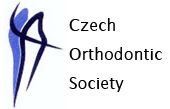


|
|
| Main Page | |
| Welcome message | |
| Overview | |
| Congress programme | |
| Honorary Lecture | |
| Pre-Congress Course | |
| Keynote Lectures | |
| Section for Assistants | |
| Section for Technicians | |
| Time schedule | |
| Abstract list | |
| Registration | |
| Accommodation | |
| Information for authors | |
| Forms and documents | |
| Contacts | |
| Archives | |
|
|
|
| About Bratislava | |
|
|
|


The Congress is organised by the Czech Orthodontic Society and Slovak Orthodontic Society. |
|
Interdisciplinary treatment for complex orthodontic patients
Dr. Ute Schneider-Moser 
Dr. Lorenz Moser 
Congress Course - Thursday, September 19, 2019
Treating severe skeletal malocclusions with orthodontic-orthognathic strategies. Orthodontic dentoalveolar camouflage treatment for patients with severe skeletal problems is associated with well-known aesthetic, functional and periodontal limits, apart from a high risk of unwanted side-effects and instability of the achieved result. To date, combined orthodontic-surgical treatment planning is the gold standard for successful and efficient outcomes. The aim of presurgical orthodontics is the elimination of the existing dental compensations in all three dimensions in order to avoid suboptimal postsurgical results, which would require postsurgical orthodontic camouflage or which would increase the risk of posttreatment relapse in the long-run.
Orthodontics and periodontics: friends or foes? The interrelation between orthodontics and periodontics remains a hot topic. The main question is whether orthodontic treatment is beneficial for periodontal health or can jeopardize the integrity of both the hard and soft tissue envelope. Tooth movements which exceed the natural boundaries are risk factors for causing osseous fenestrations and dehiscencies, which will secondarily lead to gingival recessions, especially in the presence of a thin periodontal biotype and scarce oral hygiene. Uncontrolled tipping, excessive tooth proclination and substantial arch expansion are typical causes for overpowering the natural boundaries of the dentition and should thus be avoided. On the other hand, carefully managed orthodontic treatments can reposition malaligned teeth over basal bone to improve a compromised periodontal support. The speakers will give an overview of the current literature with clinical support by presenting exemplary patients.
Missing teeth: common and uncommon solutions. Agenesis of one or both maxillary lateral incisors is a relatively common finding and the discussion whether it is better to close or to open the spaces is still ongoing. The same considerations are also valid for traumatic loss of teeth in the sensitive aesthetic zone. While prosthodontists tend to suggest implantborne crowns or cantilever bridges for substitution of the missing teeth, orthodontic space closure is an elegant and less invasive treatment approach avoiding long-term sequelae like infraocclusion with compromised function and aesthetics.
Looking closer: Is your treatment really finished? Not only after complex interdisciplinary treatments, but of course also in these patients, a meticulous occlusal finishing is key for optimum aesthetics, good function and long-term stability. Especially for patients with worn incisal edges or cusps, reconstruction of the lost tooth structure must also be performed. While many orthodontists and dentists are only focused on the aesthetic appeal of the upper „social six“, more attention should be given to the reconstruction of the lower incisor edges and the lower canine cusps in order to obtain also good incisor and canine guidance.
v
| General partner |

|
|
|
| Main partners |

|

|
|
|
| Partners |

|

|
|
|
| Media partners |

|